Join More Than 50,000+ Subscribers and get latest camera news and rumors
NEW CAMERA VIDEOS ON YOUTUBE
|
By admin, on June 13th, 2014
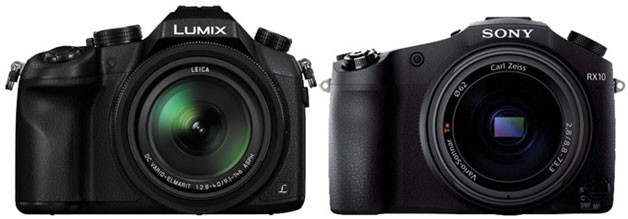
After the announcement of Panasonic FZ1000 we have started the analysis of core specification of both the camera, take a look at the specification comparison table below and High ISO test images…
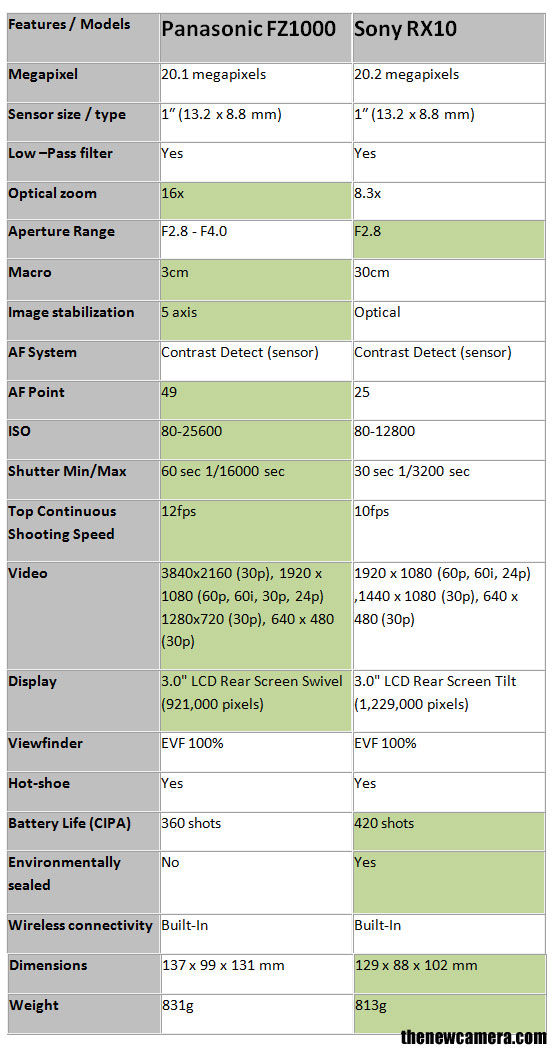
The Panasonic FZ1000 look too good on specification sheet, now let’s talk in details.
Sensor: The sensor size and megapixel of both the camera is same, but the ISO range of Panasonic FZ1000 is more compared to Sony RX10, according to theoretical rules more ISO range do help to get cleaner low-light images.
Lens: The RX10 features a constant aperture F2.8 zoom lens, the RX10 lens is composed of 14 elements in 11 groups 7 Aspherical elements on the other hand the Panasonic FZ1000 comes with a variable aperture zoom lens F2.8-F4.0 that covers more range (16X compared to 8.3X optical zoom of Sony RX10), the lens is composed of 5 elements in 11 groups 5 Aspherical, 4 ED. At the end the Panasonic offers more optical zoom than Sony with bit loss of light, the High ISO test added at the end will clear all your doubts.
AF System: The AF system of Panasonic is bit advance compared to Sony RX10, the FZ1000 uses DFD (Depth From Defocus) technology, high speed focusing system shortens focusing time and the FZ1000 lock its AF in 0.09 sec and 0.17 sec at the telephoto-end. on the other hand Sony RX10 takes 0.22sec AF time at wide and tele-end.
Shutter: The Panasonic uses HYBRID shutter system, the mechanical shutter range is 60 – 1/4000 sec and electronic shutter range is 1 – 16,000 sec, the RX10 uses mechanical shutter system only, range 30-1/3200.
Video: Panasonic FZ1000 can record 4K QFHD (3840 x 2160) video at 30p mode @ 100Mbps in the MP4 file format. Full HD 1080 video can be recorded at 60p, 30p, 24p, or 60i-in the AVCHD format, as well in the MP4 format. Sony RX10 is limited to Full HD 1920 x 1080 video recording @ 60p, 60i, and 24p. Full HD video can be recorded on AVCHD and MP4 format.
Weather-sealed construction – The Sony RX10 features Magnesium alloy top and front casings and weather sealed design helps you to shoot in any condition, no such weather sealed available in FZ1000.
High ISO Test
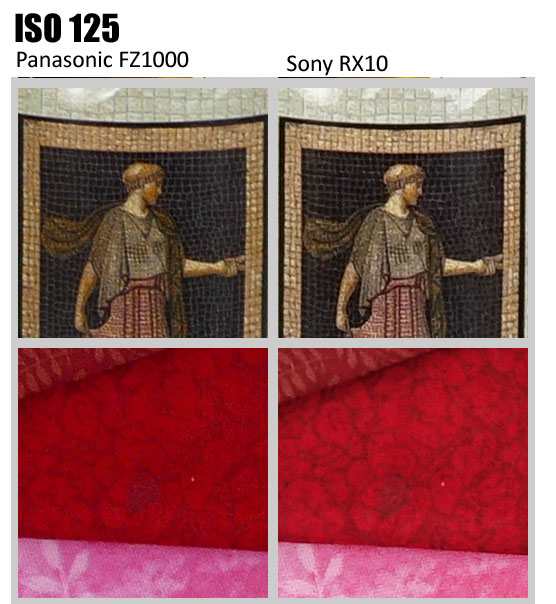 imaging-resource.com Image captured at base ISO, the Sony RX10 is showing bit more details in both the images (red leaf pattern is bit cearly visible in RX10).
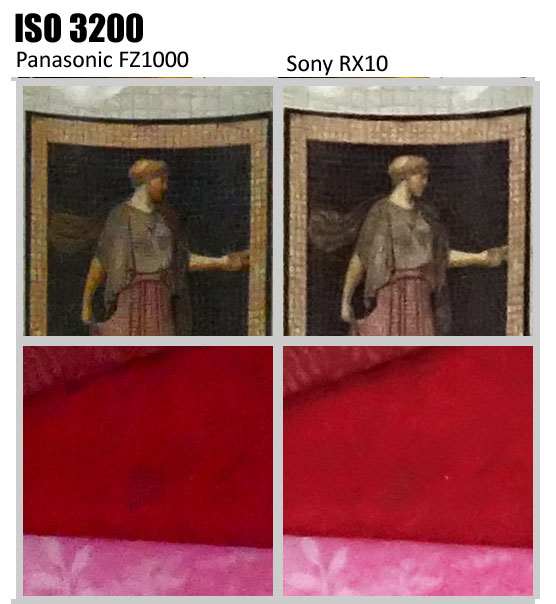 imaging-resource.com At ISO 3200 both image look similar.
Verdict: Panasonic FZ1000 does have excellent core specification at a lower price tag you get advance AF system, 4K recording option, 5 axis based IS system and 3cm macro mode… Sony offers a fast lens with limited zoom and rugged body.
Buy Panasonic FZ1000 from Amazon | B&H | Adorama || Sony RX10 Available at Amazon |
By admin, on June 6th, 2014
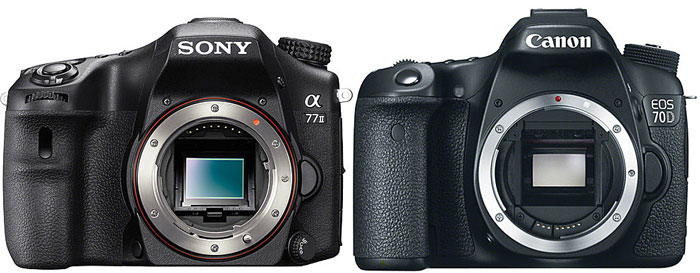
Sony A77 II vs Canon 70D, Sony A77 II is recently announced professional APS-C camera and Canon 70D is a approx 1 year old semi-professional APS-C camera from Canon, take a look at the specification comparison below.
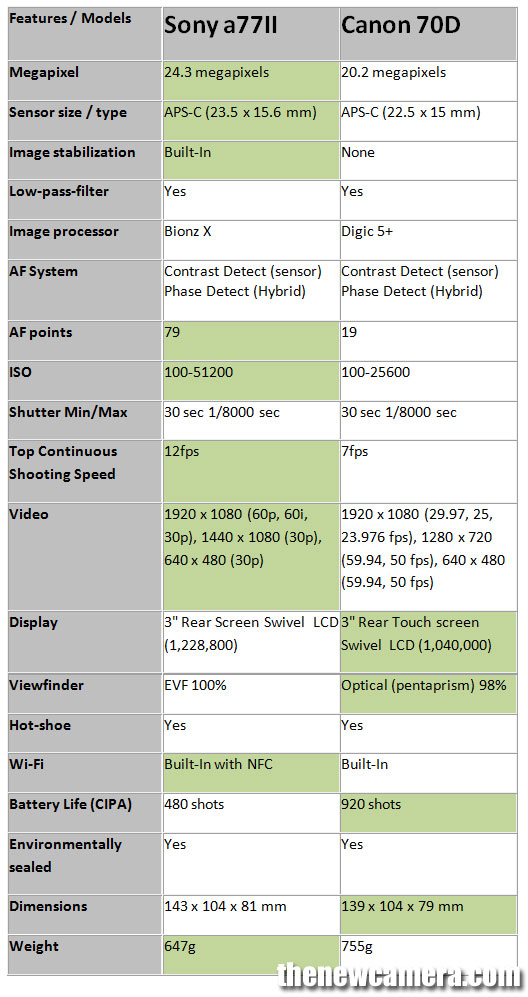
Sony A77 II has more resolution + more ISO range compared to Canon 70D. But the more ISO range is not so useful as we can clearly see in the High ISO Test the Canon 70D showing more details.
AF System:
Both System features HYBRID AF system but the Hybrid AF system in both the camera implemented in a different way.
The Sony uses SLT technology, in SLT technology uses fixed translucent mirror above the sensor and approx 20 – 30% of light transferred to the AF sensor and rest of the light goes to image sensor, the fixed mirror-technology compromises with image quality but gives you very fast AF and continuous shooting speed.
The Canon 70D uses Dual Pixel CMOS AF technology, the Canon 70D sensor integrates two separate photodiodes within each pixel to provide a broad and dense network of phase-detection gathering elements to help reduce focusing time required by traditional contrast based system camera.
Canon 70D AF points are less than Sony A77 II, and the other most important part is continuous shooting speed, Sony A77 II is can shoot 12 frames per second at a bit higher resolution , Canon 70D is limited to 7 fps only.
Video: Sony A77 II can shoot full HD videos @ 60fps on the other hand Canon Full HD mode is limited to 30fps only.
Display: 3.0″ 1,040k-Dot Vari-Angle Touchscreen, you can also shoot your subject just by tapping on the screen, Sony A77 II comes with 3.0″ 1,228k-Dot 3-Way Tilting LCD Screen (no touch control available in A77 II).
NFC in A77 II: Sony A77 II is bit more social camera compared to Canon 70D since it comes with built in NFC, so you can syn. any of your smart device to shoot form a distance.
I have added one pic only to show the image quality difference, the Sony A77 II image is down-sampled to match with Canon 70D.
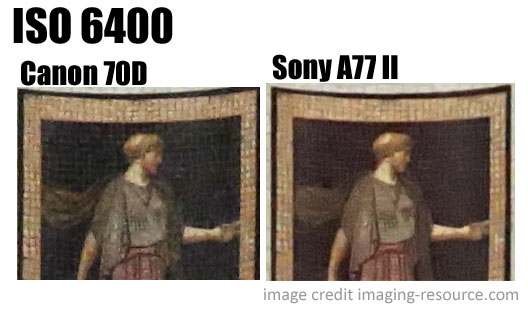
Canon 70D showing natural colors with more details compared to Sony A77 II, why Sony A77 II is showing bit more reddish hue in the image ?
Verdict: For sports shooter and Videographers we highly recommend you to buy Sony A77 II, if you are a still shooter we recommend go with Canon 70D.
Canon 70D at Amazon | B&H | Canon 70D at Amazon | B&H |
By admin, on June 1st, 2014
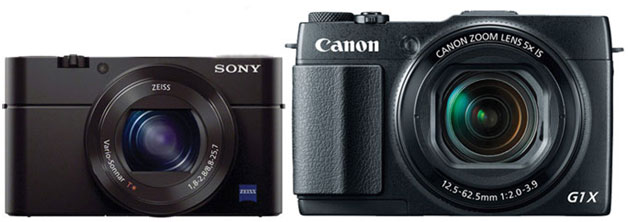
Sony RX100 M3 vs Canon Canon G1X Mark II, the Sony RX100 M3 comes with a 1 inch sensor on the other hand the Canon G1X Mark II have a 1.5 inch sensor, the more sensor area means more light gathering area and hence you get noise free images and more color + contrast at high ISO range compared to the competitor… take a look at the major difference below
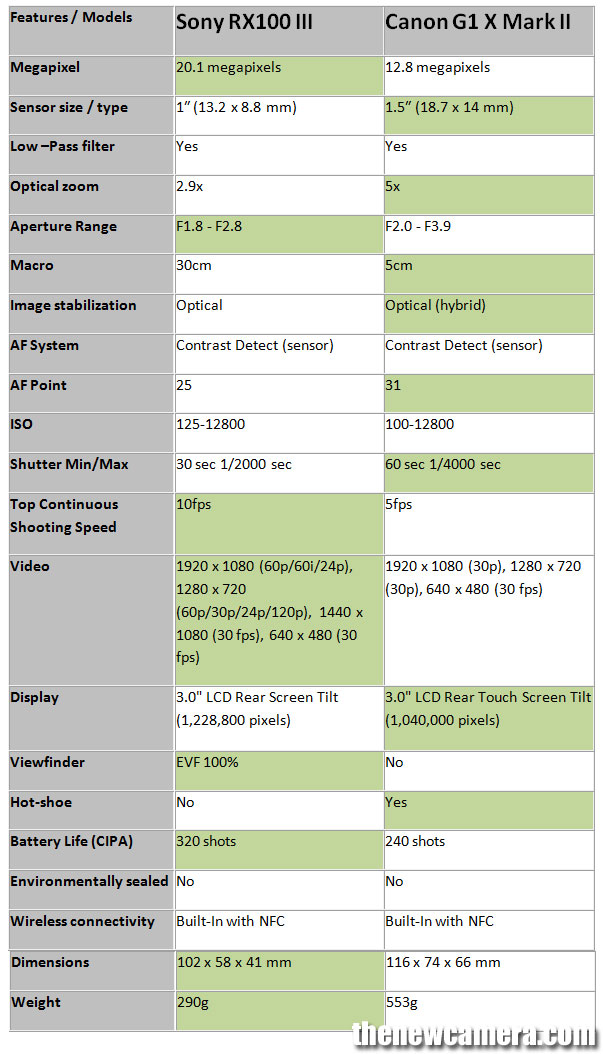
We already discussed the benefit of larger sensor, now lets talk about the lens. The Canon offers more optical zoom lens (2x more) compared to Sony RX100 M3 but Sony offers better aperture range compared to Canon. Bright lenses delivers bit more light to the sensor.
Zoom + Macro mode: Canon offers more zoom lens + better macro mode compared to Sony RX100 M3.
Hybrid Image Stabilization: Both camera features Hybrid Image stabilization modes, Canon G1X Mark II offers IS for wide range of movements >> Panning IS, Macro (Hybrid), Dynamic IS mode (video work) and final Powered IS for tele zoom, we are bit un-confimred but Sony RX100 M3 also features 5 axis based IS system, no more details available.
Advance AF system: Both camera have same type of contrast detect AF system, but the Canon G1X Mark II comes with more AF point hence you get more screen area under AF
Shutter Range: Canon G1X Mark II have bit broad shutter range compared to RX100 M3.
Top Continuous shooting speed: Sony features 2X more continuous shooting speed (10 fps) than Canon G1X Mark II, hence for sports-shooter we recommend RX100 M3 camera.
Video: Sony RX100 M3 shoot Full HD videos 60fps and able to record it at high-quality XAVC S format, which uses a Long GOP (Group of Pictures) structure, MPEG-4 AVC/H.264 video compression is also available., and other major feature is linear PCM audio compression option available in RX100 M3 camera. Canon G1X Mark II records Full HD videos @ 30fps in the Internet-friendly MP4 format.
Display: Canon G1X Mark II have 3.0″ 1,040k-dot capacitive touchscreen LCD display unit, that moves on multiple direction on the other hand RX100 M3 have 3.0″ 1229k-Dot Multi-Angle Xtra Fine LCD.
Viewfinder: Sony RX100 M3 features advance 1440k-Dot OLED Tru-Finder Pop-Up EVF with eye sensor, no viewfinder present in Canon GX Mark II.
Ease of use: Sony RX100 M3 is very pocket-table camera and easily fits in your tight jeans without any problem, the Canon G1X Mark II need a jacket pocket.
Price Factor: Both camera available at approx same price tag – $799 (MSRP), no major difference here.
Connectivity: Both camera features WiFi and NFC connectivity.
Verdict: Yes Canon will give you better image quality due to its larger sensor + you get bit more flexibility due to the more optical zoom lens and better macro mode. But Sony gives you ultra compact design, fast continuous shooting mode and excellent video recording mode with high-quality XAVC S format recording option.
if you are a travel / street photographer and need a ultra slime camera for your pocket than Sony RX100 M3 is a excellent choice.
Buy / Pre-order Canon G1X Mark II from Amazon || B&H || Buy Pre-order RX100 M3 at Amazon | B&H |
By admin, on May 31st, 2014
Fujifilm X100s vs Nikon Coolpix A vs Ricoh GR – Best APS-C Compact camera of 2014

Planning to buy your first APS-C sensor compact camera?, we have compared best three compact camera specification and high ISO images below…
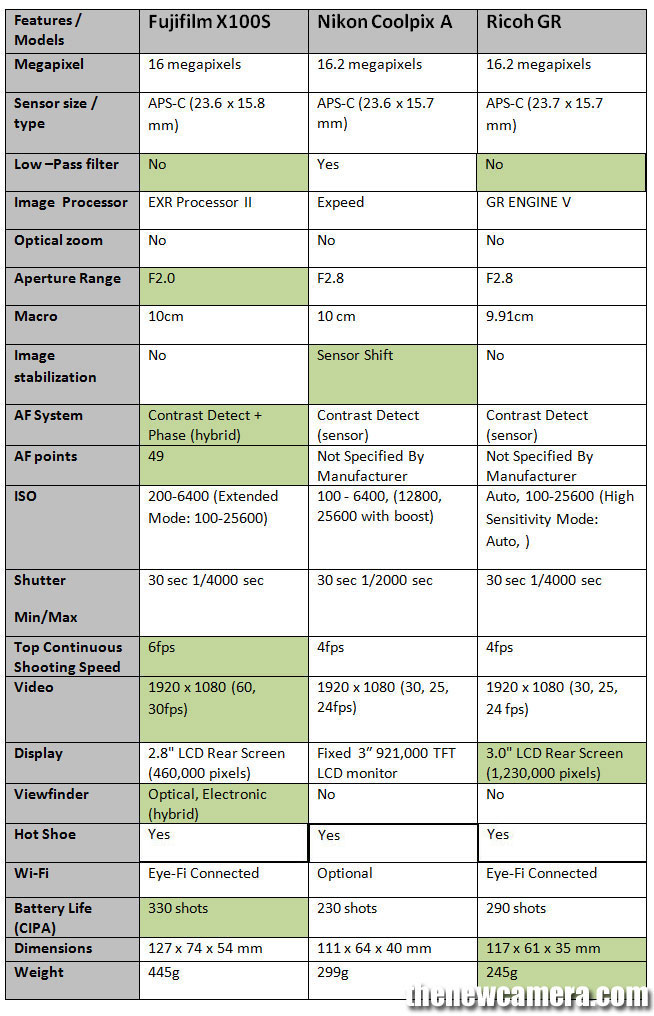
Sensor: Fujifilm features advance 16 Mp APS-C X-Trans CMOS II Sensor, X-Trans sensor uses a unique randomized pixel array in order to avoid the use of a resolution-reducing optical low-pass filter, +1 you also get bright F2.0 lens (1-stop bright lens compared to both competitors ).
Both Nikon coolpix A and Rioch GR have same type of sensor 16.2 MP CMOS sensor, even the lens used in both the camera features same F2.8 Aperture, but the Rioch GR doesn’t have low-pass filter so we will sure see sharp images from Ricoh GR camera compared to coolpix A.
From the specification comparison we can clearly see that Fuji will produce better images compared to both the camera due to 1-stop bright lens and absence of low-pass filter.
AF-system: The Fuji X100s have active phase AF point within the sensor, the Intelligent Hybrid AF system of Fuji X100s uses both contrast- and phase-detection methods to acquire focus quickly and accurately, on the other hand both Nikon coolpix A and Rioch GR uses traditional contrast based AF system..will do slower AF than Fuji X100s.
The continuous shooting speed of Fujifilm X100s is faster (6fps) compared to Nikon coolpix A(4fps) and Ricoh GR(4fps).
Image stabilization: The Image stabilization only available in Nikon coolpix A, Fuji X100s and Ricoh GR doesn’t have built-in or lens based Image Stabilization.
Video: The Fuji X100s can shoot Full HD videos @ 60fps, Nikon coolpix A and Ricoh GR limited to 30 fps only.
Viewfinder: The X100s comes with optical and electronic viewing tools are incorporated into the unique Hybrid Viewfinder, eye-sensor is located on the viewfinder to automatically turn off the rear 2.8″ LCD monitor during eye-level viewing. Ricoh GR and Nikon coolpix A doesn’t have viewfinder.
Finally Image Comparison
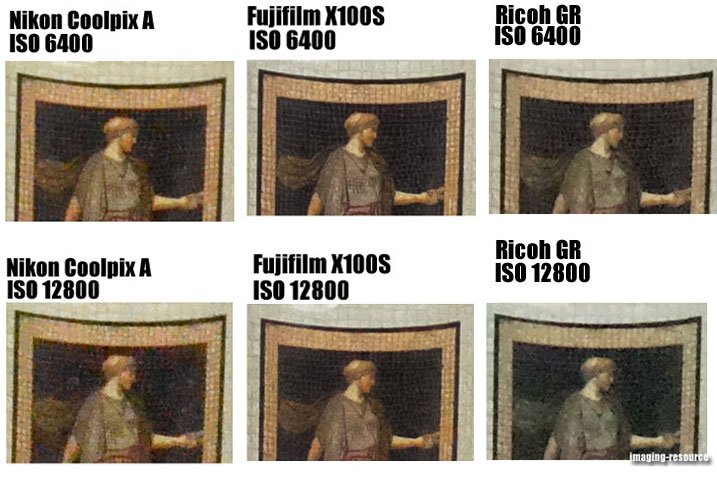
From the image comparison above we can clearly see the Fuji X100s is showing excellent results at High ISO. The Ranking based on image quality is …
#1 Fujifilm X100s
#2 Ricoh GR
#3 Nikon Coolpix A
Verdict: The clear winner of specification and image comparison is FUjifilm X100s, after that we have affordable Rioch GR and finally at the bottom we have Nikon coolpix A.
Buy Fujifilm X100s B&H and AMAZON | Nikon Coolpix A from Amazon | B&H | Ricoh GR features B&H
By admin, on May 19th, 2014

The RX100M3 is a successor of RX100 M2 camera, take a look below the table to see the major difference…
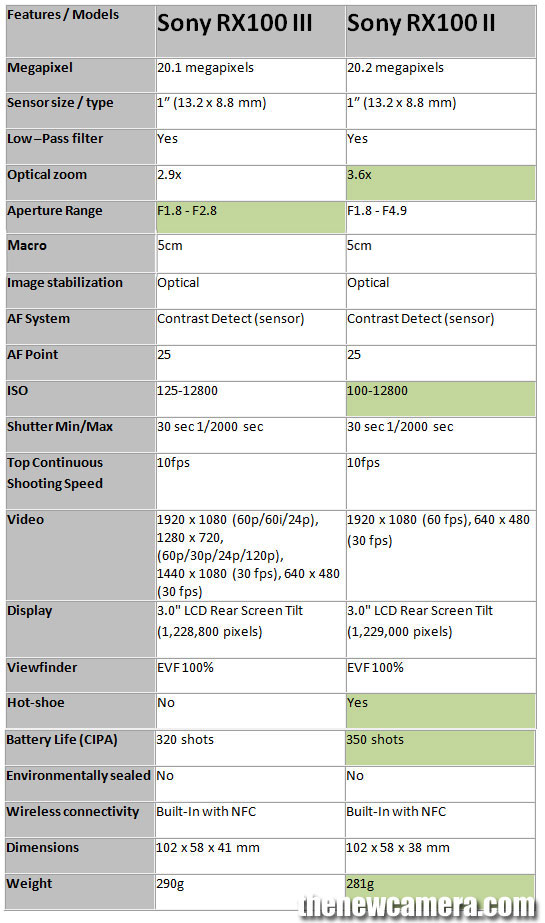
Sensor: Sony RX100M3 uses same sensor of RX100 M2 camera, but the image processor and the lens is new (mentioned below) so we may see some improvement in image quality.
Image processor: The BionzX image processor of RX100 M3 camera is approx three times faster than the Bionz image processor of RX100 M2 camera, the image processor is responsible for decoding RAW files to JPEG, AF speed, shutter lag and fast image processor naturally boost the overall operational speed of the camera.
Lenses: The lens losses some optical reach, Sony RX100 M3 able to do 2.9X optical zoom only and Sony RX100 M2 is able to do 3.6X optical zoom.
Improvement in Lens of RX100 M3 camera:
RX100 M3 comes with a improved aperture range – f/1.8 (W) – 2.8 (T) to f/11 on the other hand RX100 M2 aperture range is limited : f/1.8 (W) – 4.9 (T) to f/11, bright aperture lenses delivers more light to the sensor, hence you get more DOF and less noise in your images compared to RX100 M2.
The RX100 M3 Tele- close up range is much improved, the RX100 M3 Tele close-up AF range is 30cm on the other hand the RX100 M2 camera close-up range is limited to 55cm.
Better Background Blur – Due to close-up tele range the RX100 M3 camera gives very nice / creamy background blur compared to RX100 M2 when portraits are captured at Telephoto end (70 mm).
More wide coverage: The new RX100 M2 lens cover more frame compared to RX100 M2 camera (24-70mm vs 28-100 mm).
Inside the Lens: The Sony RX100 M3 lens is made up of 10 elements in 9 groups (including 9 aspherical elements), the RX100 M2 lens was made up of 7 elements in 6 groups (including 4 aspherical elements), due to the use of more and high quality aspherical elements,
Video: The frame rate remains same but new XAVC S recording format added (same as Sony A7s camera), audio recording format also get a facelift by adding Linear PCM (Pulse-code modulation – 2 channel).
Introduction of OLED pop-up viewfinder: The 0.39″ 1,440k-dot SVGA OLED Tru-Finder EVF added by Sony in RX100 M3 camera, the EVF’s optics feature a Zeiss T* anti-reflective coating to enhance visibility, the viewfinder also features eye sensor to detect your eye position.
The Hot-shoe is removed by Sony, it may bring disappointment to professional photographers since now there is no option left to use external flash or micro-phone.
Verdict: The RX100 M3 does have improved lens, new image processor, pop-up viewfinder and highest level of (XAVC S) video recording format available, but the sensor remains same as RX100 M2 camera, the RX100 M2 users may wait (if you feel these improvements are not enough for you) for Sony RX100 M4 camera but for new users we highly recommend you to buy Sony RX100 M3.
Buy Pre-order RX100 M3 at Amazon | B&H |
By admin, on May 13th, 2014
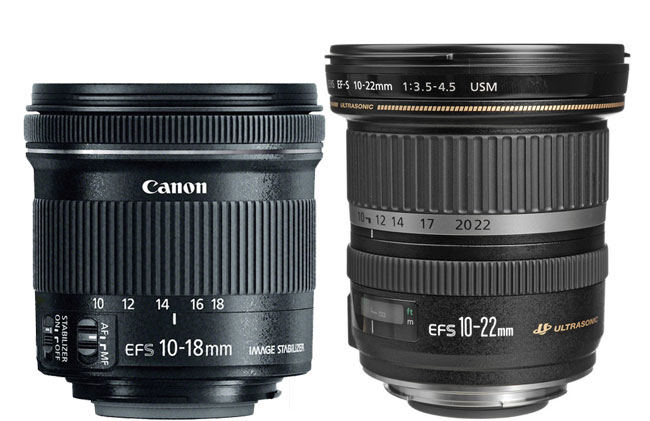
We have done a quick specification comparison between the new and old EF-S ultra wide angle lenses (Canon EF-S 10-18mm vs Canon EF-S 10-22mm) available for Canon APS-C Sensor based DSLR…
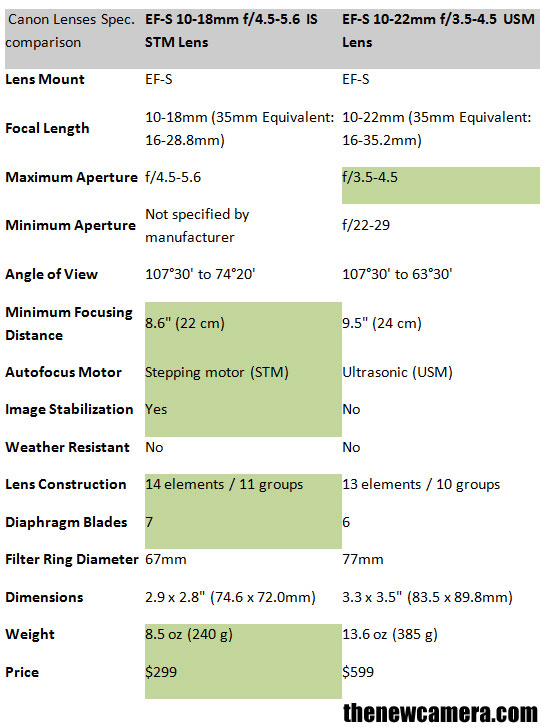
The new Canon Lens is very affordable compared to its predecessor , the new Lens also features Stepping motor, the stepping motor allows you to do AF silently (without AF noise) , the other major feature is built-in image stabilization that gives you shake prevention up to 4 stops, the new 10-18mm lens will be highly suitable for still shooters as well as Videographers. Canon also upgraded its optics and Diaphragm Blades from 6 to 7, the lens also losses some fat as well as price.
Buy / Pre-order 10-18mm lens at B&H
By admin, on May 3rd, 2014
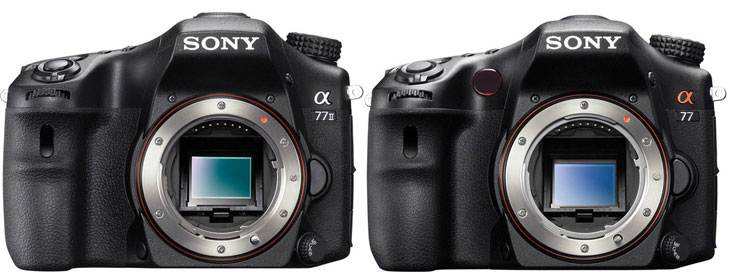
Sony A77 II vs Sony A77 specification comparison- Sony A77 II is just announced by Sony, according to the press release published by Sony, camera features newly developed sensor, new Bionz X image processor and it can also record Full HD videos at mp4 (web friendly) or in RAW format (need external recorder for RAW video files), take a look at the specification sheet below for common strength and difference between these two smartphone.
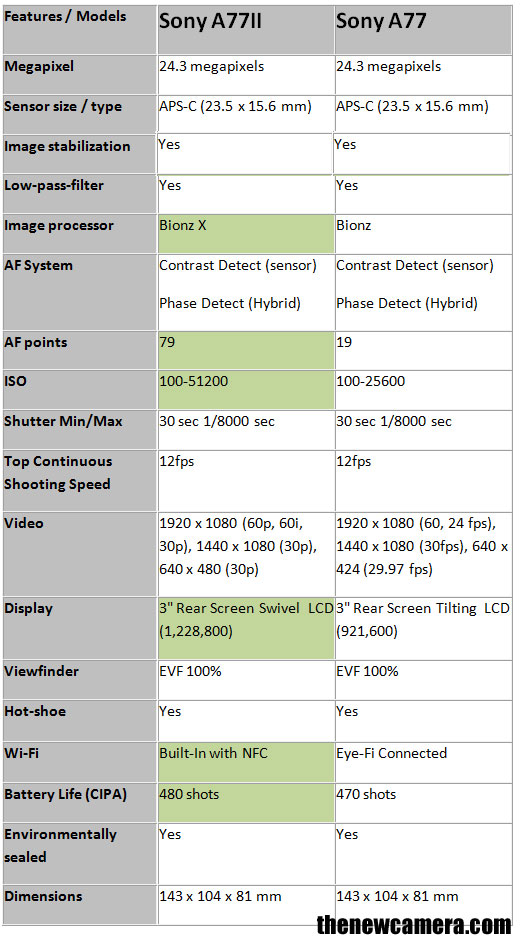
New features in Sony New A77 II
- Camera have new AF system – 79 Phase AF points and 15 are cross-type,
- Bionz X image processor, with the help of new image processor and newly developed image processing algorithm Sony unlocked ISO range up to 51200.
- 3″ Swivel LCD display
- Built in WiFi and NFC
But unfortunately the continuous shooting speed remains same, its a major drawback for Sony since they have taken a complete three year of time to develop Sony A77 II camera.
Both have same video recording specification [Full HD @ 60fps] and format AVCHD / MP4 (MPEG-4 AVC (H.264)).
Verdict: Sony A77 II surely is an upgrade from A77, you get fast AF system, advance image processor, improved high resolution display and built in WiFi with NFC. For image quality wait till the high ISO test images get surfaced over the web, however we have published A77 II images taken at different ISO level few days ago here.
Buy A77 II from Amazon || B&H || Adorama
|
KEEP THIS BLOG ALIVE - Support New Camera Buy Canon Lenses, Buy Music CD or Digital Camera at amazon it helps this site, and you do not pay anything extra, it is just a way to help support this site.

|























